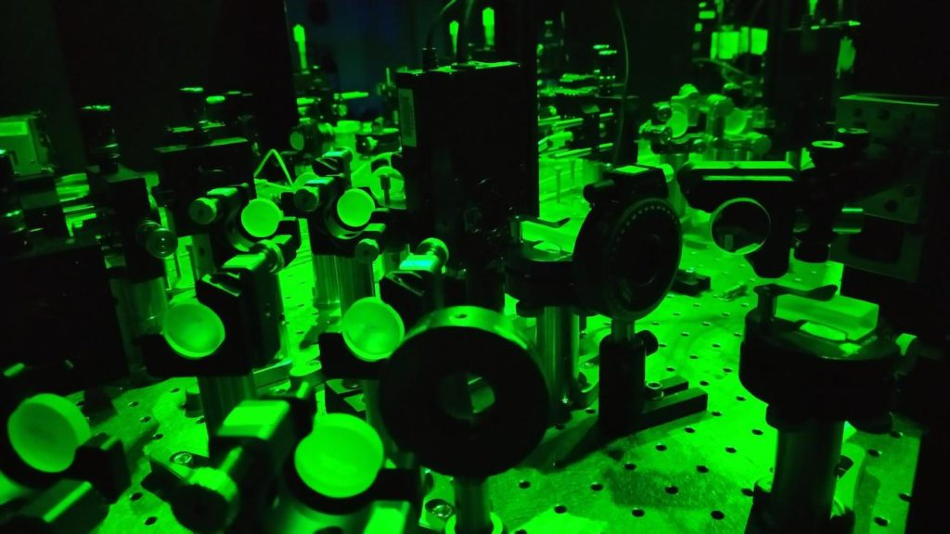Aug 19 2020
At Griffith University, quantum physicists have revealed a new paradox according to which, in the case of some long-held ideas about nature, “something’s gotta give.”
 Experimental apparatus for a test of the paradox with particles of light. Image Credit: Kok-Wei Bong.
Experimental apparatus for a test of the paradox with particles of light. Image Credit: Kok-Wei Bong.
Quantum theory is almost excellent at estimating the behavior observed while conducting experiments on small objects such as atoms. However, challenging conceptual difficulties emerge when quantum theory is applied at scales considerably larger than atoms, specifically to observers performing the measurements.
In a study reported in Nature Physics, an international research group under the guidance of Griffith University in Australia has honed such problems into a new paradox.
The paradox means that if quantum theory works to describe observers, scientists would have to give up one of three cherished assumptions about the world. The first assumption is that when a measurement is made, the observed outcome is a real, single event in the world. This assumption rules out, for example, the idea that the universe can split, with different outcomes being observed in different parallel universes.
Eric Cavalcanti, Senior Theory Author and Associate Professor, Griffith University
Cavalcanti continued, “The second assumption is that experimental settings can be freely chosen, allowing us to perform randomised trials. And the third assumption is that once such a free choice is made, its influence cannot spread out into the universe faster than light.”
“Each of these fundamental assumptions seems entirely reasonable, and is widely believed. However, it is also widely believed that quantum experiments can be scaled up to larger systems, even to the level of observers. But we show that one of these widely held beliefs must be wrong! Giving up any one of them has far-reaching consequences for our understanding of the world,” added Cavalcanti.
The research group has determined the paradox by investigating a scenario with well-isolated entangled quantum particles together with a quantum “observer.” A quantum observer is a quantum system that can be controlled and quantified from the outside, yet it can make measurements on a quantum particle on its own.
Based on the three fundamental assumptions, we have mathematically determined limits on what experimental results are possible in this scenario. But quantum theory, when applied to observers, predicts results which violate these limits. In fact, we have already performed a proof-of-principle experiment using entangled photons (particles of light). And we found a violation just as quantum theory predicted.
Dr Nora Tischler, Senior Experimental Author, Griffith University
Tischler continued, “But our ‘observer’ had a very small ‘brain’, so to speak. It has just two memory states, which are realised as two different paths for a photon. That’s why we call it a proof-of-principle experiment, not a conclusive demonstration that one of the three fundamental assumptions in our paradox must be wrong.”
“For a more definitive implementation of the paradox, our dream experiment is one where the quantum observer is a human-level artificial intelligence program running on a massive quantum computer,” stated Professor Howard Wiseman, project leader and Director of Griffith’s Centre for Quantum Dynamics, where the theoretical and experimental groups are based.
“That would be a pretty convincing test of whether quantum theory fails for observers, or whether one of the three fundamental assumptions is false. But that’s probably decades away,” Professor Wiseman added.
The Centre for Quantum Dynamics laboratory, where the experiment was carried out, forms part of the Centre for Quantum Computation and Communication Technology, which is an Australian Research Council Centre of Excellence.
It has long been recognised that quantum computers will revolutionise our ability to solve hard computational problems.
Howard Wiseman, Professor and Director, Centre for Quantum Dynamics, Griffith University
Wiseman continued, “What we didn’t realise until we started this research is that they may also help answer hard philosophical problems – the nature of the physical world, the mental world, and their relationship.”
Journal Reference:
Bong, K.-W., et al. (2020) A strong no-go theorem on the Wigner’s friend paradox. Nature Physics. doi.org/10.1038/s41567-020-0990-x.